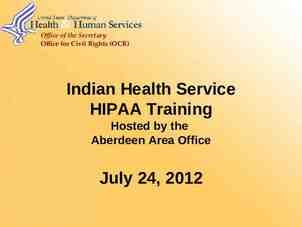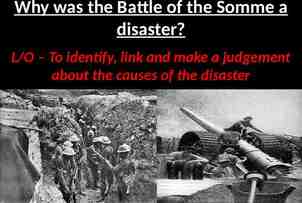What is this stuff and how do you learn it? Where is its place in the
68 Slides2.59 MB
What is this stuff and how do you learn it? Where is its place in the How is from How do it youdifferent teach it? history of writing/writing any other kind of writing? studies?
Let’s start with “creative writing”— small “c” & small “w” :)
That is what kind of writing is “creative” writing? What is “art,” really? What’s it for? Whom is it for? Take a look at a verrrrryyyyy long list of quotations about art, creative writing, and the creative process online: Skittish Libations Pick one you like, and post it to Blogger. Explain why you like it.
We’ll come back to your selection of quotations in a bit. Yesterday you answered some questions on our blog: 1. What is creative writing? 2. What’s it for? Whom is it for? 3. Should it be a mandatory subject in the schools? 4. Whose needs are most important: the author or the reader? Here are some postings from previous college classes:
Yes! Absolutely! Deven Except Creative Writing is any writing that isn’t done for someone else. Creative Writing is for the writer. The same I Iswould the audience really that irrelevant? say holds true for any kind of art. IsAn this thecreates kind of you/we Skittish Libations artist a art painting for typically spend our money Big his/herself, and the on? folks CDs? walking around films? the gallery are privileged to see budget it. A musician creates an album about something personal in his life and the listeners are simply “along for the ride”.
Erica Creative writing is without restrictions, or not many of them. Individuals are free to express themselves and be original. Too rules and —except, um, many what about form? Craft? restrictions suppress creativity since individuals are so limited. Creative And, how come this of writing again, can be described as freedom writingthe where are not isn’t artemotions that most of us concealed and the creator is present actively within eachsupport? piece of work. Yep, completely true!
Brian Rhetorical component of any piece of writing Creative writing is one of the most powerful ways to expel and express feelings, thoughts, and ideas. Writing and all art is meant to affect and influence the minds and emotions of others. The needs of the audience are important and writer should make some compromises, however a writer should never compromise their message. Or is it something we do for its sake—without any exterior purpose?
Heather Creative writing is something that I want to do because it helps me feel connected. It is a way for me to tap into my Maybe writing’s a constant negotiation between these two subconscious thoughts and desires. It’s a way for me to express those to others. SELF Artist OTHER Audience
Mass market: innovation low priority. Audience satisfaction and pleasure high priority. Formulas common. Feel-good; few demands on audience. Confirmation of what is known. Fine arts: innovation high priority. Artist satisfaction and pleasure high priority. Selfconscious attention to tradition. Assumes a very well read audience. Art quality, exploration of unknown high priority.
Ethical purpose of art? Adam What did Plato say about this? All art should be educative (assuming there’s a way things should be – that there is a right way), for what possible value could art possess if it did not lead us towards what is ultimately good? This leads us to the point that we must first know what is good. I’m not so sure we (as a people/collective consciousness) actually do know what is good (though we often assume we do). Fortunately, creative writing allows for the opportunity for each individual artist to search (however they so choose) for what is true and good through a process of self-expression, and thus, self-realization. I could go off on this for hours, but I hope this gives a general outline of why I write. P.S. Sorry this is so late, I was at the RNC and then went to a musical this weekend. But I can’t wait to meet you all later Ok, the REAL truth comes out. Art’s an excuse to be a slacker! Plato was right
Chris W ho ju dg es ? Creative writing is for writing very creatively. It is for fun, enjoyment, and school type people. Art is for those people who enjoy art. It is hard to say if the writer’s or audience’s needs are more important because, when juxtaposing them, only an english teacher could determine whose needs institute more need. It should be determined on an individual basis. All students should take creative writing so they can learn to write better.
Ancient DNA: a History Lacey L. Locket (Sam Schanhaar) The extraction and amplification of ancient DNA (aDNA) is a recent discovery in the history of science. The concept of ancient DNA has eluded scientists within the Cretaceous epoch, reportedly also yielded authentic DNA (Cano et al. 1993). DNA retrieval was also not limited to y and epidemiology. The field of ancient DNA is constantly growing with the advent of new techniques concerning extraction and amplification in conjunction with individuals such as Savante Pääbo and Russ Higuchi. There have been numerous tissues that have been subjected to aDNA research including Neanderthal remains, King Tut, and Otzi. Ancient DNA is genetic material that is recovered from historical and pre-historical specimens. Ancient DNA can be obtained from archaeologically or preserved in a museum environment. Ancient DNA can be retrieved from skeletal material, mummified tissues, and hair. Viable samples can be obtained from dry, wet, and frozen specimens. Samples of ancient DNA can be extracted from plants, animals and insects [ ]
Notice how little attention in these items on the work itself Carl genre Creative writing,Forget in myallopinion, is poetry, prose, these that you don’t need to do really it’s anything questions— extensive research to write and doesn’t need a creative bibliography. Creative writing writing is the can be something totally new, or something writing of ripped off from one of the greats, just poetry a little and different; different enough, fiction. Duh. at least, to not get sued. It can be a way of The end. expressing yourself, resolving inner conflicts, or just killing time. therapy (back to the self) Does/can the work have a mind of its own? Some artists have spoken about it in these terms
the life & rights of the work itself! Eric I don’t think I can answer all of these questions in a single paragraph (or a single page) so I’ll focus on one of them. As to the question of whose needs are most important the writer’s or the audience’s, I believe that once a particular piece of writing is set down, that the author in a sense ceases to exist. The writing takes it’s place among all other forms of writing i and n is o s n e im that has come organized and categorized based onathe work d l c ori it becomes an entity onto t before. Once the writing is set down, s i h d n a l itself, an artifact of a specific time and environment. Asking a r u t where did eric go? l u whose the cneeds are more important is like asking who gets the most value from a relic unearthed in who an archeological dig, those was eric people who originally used it in their daily lives, or those scientists who use it to gain a glimpse that ever dailyan lifeeric wasof there hundreds or thousands of years in the future. The artifact meets both groups needs in completely eric different ways and remains ready to fulfill other needs in whatever situation is brought to bear. As a writer, I try to oremain focused on this belief, as I think it helps me distance myself from the work, and eric point other than one of allows me to approach it from a vantage self interest and vanity. the very broad view ng si s n lo e’ i rk? on lf wo se e th
Ex is pre cr sha ssi af te ped on t d an hat d A pile of crap; a hoax; excuse for not having a REAL job Formalist Creati ve Writin g Art Ex Ftoha pre ss op rtm i s io en w n a an idlies d -t fre e y e h T o n ho g ir n of n ti io d rt a A learnable skill Th tra e su dit bv ion er sio no f n; sio ’s es pr l f ; ne ex se of o lf- or Se ly f tion on i le a so plor e vis ex iqu un or th l na ical o i ot log m E cho y ps p a r e So m m F so ethi ea o le ng ly nsrm fo p r o of a r ple lioth duc assters ed au ing ; a die a nc n e s riou yste lent Am rn ta y inbo dit mo om Ac Process Product
no t io f Creati ve Writin g ofF ma reo gn alirmific ty aat i An escape from reality; a sedative or distraction f eo nc lity fia ea o De ty; r ht t e b ali ug re it o as lison t The improvement of Formalist reality (art as a hammer A A re co Foality; nfron rmfac tati ailnig on w srtea ith lit y en nv ei Th lity rea Note that some types, su ch as sat ire mock or interroga , te reality
Ok. So nobody knows how to define it. Or there’s no final definition. Then how do we learn it? How does it get taught? (Emphasize process or product? Craft or free exploration?) How is it distinguished from any other kind of writing and so what’s it’s place in the schools at any level? In other words
What is “Creative Writing” with a capital C and W? the branch of English Studies that involves teaching and learning how to write creatively, right? Yeah, but
Isn’t all writing “creative”? Why call it Creative Writing? Can it really be taught? Isn’t it about talent and a mysterious ability to summon the muse? What’s it doing in a university? How do you evaluate it? How does it relate to Rhetoric and Composition, Literary Studies, Linguistics, Technical Writing? Isn’t writing in these fields creative also? What’s more important: the writing of literature or the study of it?
Did you know In some of its earliest appearances in higher ed, it was taught to help students understand literature better. I.e., it was in the service of literature studies. The idea was that writing some fiction, poetry, drama themselves, students would better understand the masterpieces of literature.
But also a bunch of teachers who were also writers wanted to get together with other writers and blab about their work— in a college setting. (Couldn’t hang out in the bistros of Paris or Gertrude Stein’s salon anymore, so had to get together somewhere )
It’s always been a bit of an outlaw Not scholarly like other disciplines. The MFA is a studio degree. Very different criteria. Not really “academic.” More of a “spritual” discipline. A “soft” subject. Workshop approach is whimpy: writers who want to talk with other writers sit in a circle and read/discuss their stuff, while a teacher/published writer chimes in.
Since the 80s, though, It has been influenced by postmodern theory, composition studies, and English education. The way it is taught is changing here and there You can now study “the teaching of Creative Writing” as a subject itself. Or “Creative Writing Studies” which examines: o Creative writing pedagogy o The culture of creative writing/creative writing in the culture o The history of creative writing in the university. You can get an MA and PhD in “Creative Writing Studies.”
When I go into the creative writing classroom I teach genres. Poetry, fiction. Creative nonfiction. Some script writing. I encourage wide-open self-expression. I encourage attention to audience. Craft. I encourage demented new ways of thinking about the world. I encourage thoughtful appreciation of very old traditions. I try to do everything. That’s why I’m burning out. That’s why I’m insane. Don’t tell my boss.
By the end of GS, we’d like you to submit work for our local buses!
Fiction and Poetry (what, I’m guessing, you’re most likely to write for your magazines?) Let’s start with fiction.
Tim O’Brien’s, “How to Tell a True War Story”
1. Pick one sentence or passage from this piece that strikes you as interesting, moving, strange, confusing, illuminating, dumb, imaginative, well-crafted, or otherwise noteworthy. Explain your choice. 2. What kind of story is this? 3. How is it put together? What is its structure? 4. What makes it different from other short stories you may have read? 5. Who are the characters? What's with these guys? What's the narrator's chief problem or struggle? Is that problem ever resolved? 6. How do questions about gender enter into this story? Is the story itself or its language "gendered"? How are men and women represented in the piece? Is the story in any sense about gender? 7. How does this story fit into the perspectives wheels we looked at earlier? What kind of "art" is it? 8. How does the piece make you feel, finally? What's its main effect or effects? 9. Read the story again from the point of view of a writer. I.e., reading the piece as a fiction writer yourself, what do you notice? What general and specific choices has this author made? What possibilities does it suggest for your own writing?
Poetry Going Back to The Very Beginning Playing with language: Kenneth Koch, The Luminous Object Surrealism Worst High School Metaphors Harmonious Confusion
Maybe it starts with just digging words.
What’s figurative language? How do you say that someone is drunk? How many animal metaphors do we use everyday? Where did most worn-out metaphors come from, and how do we keep the language alive? Look at Lorrie Moore
Worst High School Metaphors 1. Her face was a perfect oval, like a circle that had its two sides gently compressed by a Thigh Master. 2. His thoughts tumbled in his head, making and breaking alliances like underpants in a dryer without Cling Free. 3. He spoke with the wisdom that can only come from experience, like a guy who went blind because he looked at a solar eclipse without one of those boxes with a pinhole in it and now goes around the country speaking at high schools about the dangers of looking at a solar eclipse without one of those boxes with a pinhole in it. 4. She grew on him like she was a colony of E. Coli, and he was roomtemperature Canadian beef. 5. She had a deep, throaty, genuine laugh, like that sound a dog makes just before it throws up. 6. Her vocabulary was as bad as, like, whatever.
7. He was as tall as a six-foot, three-inch tree. 8. The revelation that his marriage of 30 years had disintegrated because of his wife’s infidelity came as a rude shock, like a surcharge at a formerly surcharge-free ATM machine. 9. The little boat gently drifted across the pond exactly the way a bowling ball wouldn’t. 10. McBride fell 12 stories, hitting the pavement like a Hefty bag filled with vegetable soup. 11. From the attic came an unearthly howl. The whole scene had an eerie, surreal quality, like when you’re on vacation in another city and Jeopardy comes on at 7:00 p.m. Instead of 7:30. 12. Her hair glistened in the rain like a nose hair after a sneeze.
13. The hailstones leaped from the pavement, just like maggots when you fry them in hot grease. 14. Long separated by cruel fate, the star-crossed lovers raced across the grassy field toward each other like two freight trains, one having left Cleveland at 6:36 p.m. Traveling at 55 mph, the other from Topeka at 4:19 p.m. At a speed of 35 mph. 15. They lived in a typical suburban neighborhood with picket fences that resembled Nancy Kerrigan’s teeth. 16. John and Mary had never met. They were like two hummingbirds who had also never met. 17. He fell for her like his heart was a mob informant, and she was the East River. 18. Even in his last years, Granddad had a mind like a steel trap, only one that had been left out so long, it had rusted shut. 19. Shots rang out, as shots are want to do.
20. The plan was simple, like my brother-in-law Phil. But unlike Phil, this plan just might work. 21. The young fighter had a hungry look, the kind you get from not eating for a while. 22. He was as lame as a duck. Not the metaphorical lame duck, either, but a real duck that was actually lame, maybe from stepping on a land mine or something. 23. The ballerina rose gracefully en Pointe and extended one slender leg behind her, like a dog at a fire hydrant. 24. It was an American tradition, like fathers chasing kids around with power tools. 25. He was deeply in love. When she spoke, he thought he heard bells, as if she were a garbage truck backing up.
Sometimes it helps to take a really unusual perspective say, that of an animal. Once a student wrote a piece from the point of view of a deer. It described a hunter’s gun as “a branch that barks.”
Poetry Focusing on particular traditions: The private, inward-directed lyric poet. The community bard. The craftsman or maker. The mad or divinely inspired visionary.
Spoken Word Poetry The Oral Tradition (the Bard)
This stuff is really old Hey, Daddy-o Homer 800 BC Old English poetry 400 AD Native American 8000 BC to present The Beats 1950s Slam Poetry 1980s to present
The Beats (1950s,60s) Getting poetry out of the classroom Poetry read to jazz accompaniment
Ferlinghetti: http://www.ndsu.edu/instruct/cinichol/CreativeWr iting/323/MiscPoemsFerlinghetti.htm Ginsberg: http://www.ndsu.edu/instruct/cinichol/CreativeWriti ng/323/MiscpoemsGinsbergHowl.htm
Rap and Hip Hop Came of age alongside the poetry slam phenom. Hyperbolic, gymnastic, inventive Heavily end-rhyme based; rhymes often funny, clever, silly Distinct prosody
The Poetry Slam and Open-Mike Coffee House Reading Harks back to the Beats Again, desire to get poetry out of the classroom Emphasis on anyone can write poetry Tends to be political Theatrical, sometimes mixed-media
How do slams work?
check these out! www.nuyorican.org/ AND www.poetryslam.com/
Listen to Spoken Word selections, plus Beat poems with jazz accompaniment
Blurring the line between poetry and theater; performances are like one-person, one-act plays. Aggressive, clever, sometimes funny rhyme, not in any strict pattern (triple rhymes, internal rhymes, slant rhymes, repeated words, etc. In video, “Lazarus, Lazie, Lazy”). Projection! Loud broadcast. Number of unstressed syllables don’t matter, maybe. Success depends on how cleverly you get the four stresses in (rap). Getting into a groove. Memorizing the material adds interest. Mixing genres: insert singing, use accompanying sound, etc. Ritual presence of performer.
Ok. So. Describe what you see on the table. REALLY LOOK. The thing. The thing itself. Make the object
Are you being dull? Are you being predictable? Are you thinking too much? Try a thesaurus
Try Being Surreal
Surrealism
1924: Andre Breton: The Surrealist Manifesto “I believe in the future resolution of these two states, dream and reality, which are seemingly so contradictory, into a kind of absolute reality, a sur-reality.”
“The idea of surrealism aims quite simply at the total recovery of our psychic force by a means which is nothing other than the dizzying descent into ourselves, the systematic illumination of hidden places and the progressive darkening of other places, the perpetual excursion into the midst of forbidden territory” (Breton).
Between WWI and WWII Surrealism: the principles, ideals, or practice of producing fantastic or incongruous imagery or effects in art, literature, film, or theater by means of unnatural juxtapositions and combinations. An attempt, through these random, irrational juxtapositions and combinations, to make make a new reality or a new whole.
Instead of: I saw the rabbit, as soft as cotton, his eyes bright, munching the grass. you get: I saw the rabbit, ripe as a hammer, his eyes boiled, baptizing the grass. (random words from carpentry, religion, cooking) or: I saw the rabbit, as Monday as Van Gogh’s ear, eyes in search of Harvard, document the grass. (random words from stuff on my desk)
Early Surrealists Valued: When a doughboy missed his sweetheart, he couldn't just write, The names of Aztec gods were on one page, I miss your muffin, random CHANCE; serotonin uptake inhibitors on the other. because of the censors. Apollo, who ate the most pussy of al the ancient gods, was out. The Holy Ghost was tree. in. “convulsive beauty,” the marvelous, the uncanny, Here, you said: another baby avocado Everyone knew where the Holy Ghost stood on cunnilingus threw your shoe. Ithe broke the You disruptive, and unexpected; I love you. This remarkable statement Here's your fire even though Hefossil was ineffable. the refrigerator and the fish. has appeared on earth to substantiate the clams. extinguisher, I broke my shoulder blade. I tried to make jambalaya. strange and unexpected juxtapositions; To relax the organism, the cookbook said, pound with a mallet on the head or shell. welcome to the glacier. defamiliarizing the everyday so that it once again appears strange and new; liberation of mind from bourgeois modes of thinking; Don't think I wasn't shocked when the you were a traffic signal I can't make it any clearer than that and I a woodpecker. and stay drunk. oblivion ha-ha silly brain brillo stain
Duende
Lorca “intelligence is often the enemy of poetry, because it limits too much, and it elevates the poet to a sharp-edged throne where he forgets that ants could eat him or that a great arsenic lobster could fall suddenly on his head—” “The duende.Where is the duende? Through the empty arch comes a wind, a mental wind blowing relentlessly over the heads of the dead, in search of new landscapes and unknown accents, a wind that smells of baby’s spittle, crushed grass, and jellyfish veil, announcing the constant baptism of newly created things.” Duende is “the melancholy demon of Descartes: a demon who was small as a green almond and who sickened of circles and lines and escaped down the canals to listen to the songs of blurry sailors”
you know it when you hear it
Elvis
"The Guitar“ "Lament for Ignacio Sánchez Mejías": #1, 2, 4 "Casida of the Lament," p. 91









































































